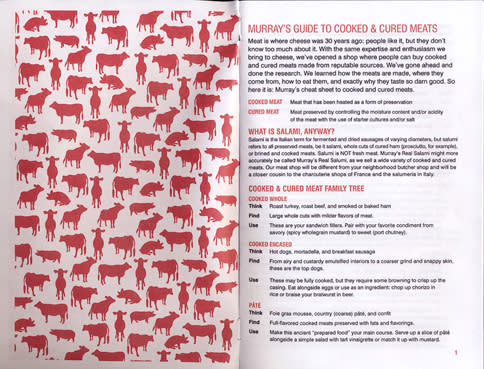Everything you need to know about cured meats

These are indeed meaty times. Not for the economy, obviously, but rather for lovers of salumi or charcuterie or whatever you want to call the fine art of preserving meat. Beet and goat cheese salad--the de rigeur dish on any serious New American restaurant menu for several years--has relinquished the Most Popular title to cooked and cured meats, whether made in-house, imported, or sourced from one of the growing number of artisanal salumi makers here in the US (La Quercia, Boccalone, Creminelli, to name but a few). What I know about charcuterie (and my few home cooking attempts at making stuff like lardo, confit, and jerky) has been inspired primarily by five books. First and foremost, Charcuterie and French Pork Cookery by Jane Grigson, followed by Pates, Terrines and Galantines by Richard Olney (part of the Time-Life's The Good Cook series), Charcuterie: The Craft of Salting, Smoking, and Curing by Michael Ruhlman and Brian Polcyn, The River Cottage Meat Book by Hugh Fearnley-Whittingstall, and Pork and Sons by Stephane Reynaud.
Related: The only cookbooks you'll ever need.
Although it feels like we are currently drowning in all things pork, cured, and sliced, we, as chefs and customers, still have a lot to taste and learn. What's crespone? Why is celery juice so important to the "natural" salumi maker? What's on the outside of my salami? And do I eat it? Those are just a few of the important questions answered in the handy pamphlet produced by New York's venerable cheese and meat emporium, Murray's. Both locations (Grand Central Terminal and Bleecker) are worth a visit. Until then, you can click on the image above to download the guide. Now, when someone ask "What's the difference between prosciutto and culatello?," you'll be able to tell them.
Everything's Better with Bacon: 20 ways to use everyone's favorite cured meat.
More from The BA Foodist:
